Entrepreneurial "bigwigs" have moved to Xi'an to carry the dream of young people to start a business.
For professional baristas, please follow the coffee workshop (Wechat official account cafe_style)
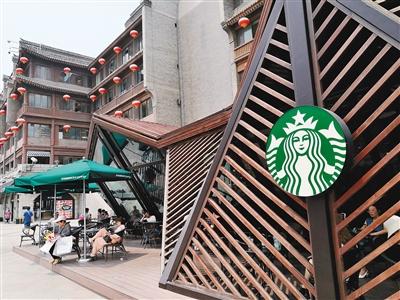
Xi'an Starbucks clock tower store has a steady stream of customers, photographed by reporter Zhai Xiaoxue.
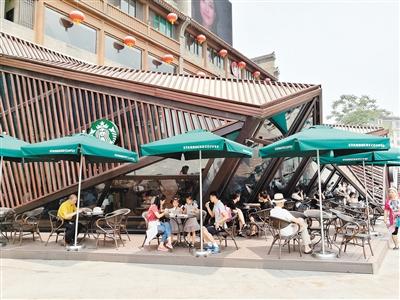
Starbucks clock tower store. (photo by reporter Zhai Xiaoxue)
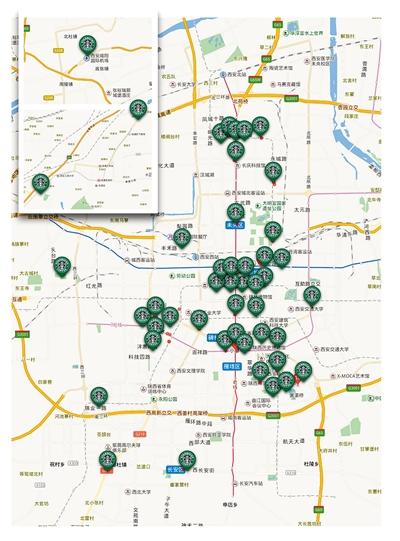
There are 46 Starbucks operating in Xi'an, and more than 10 have signed contracts. Drawing Jia Qinghua
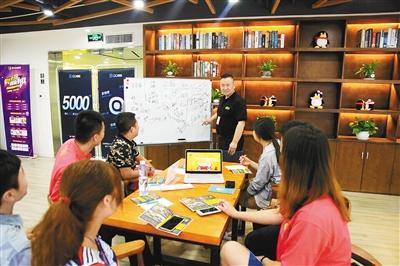
Photo by Dou Yiming, a reporter of the business group discussion in founder Coffee.
Reporter du Jianguo
This year, a "coffee fever" began to become popular in the ancient city of Xi'an!
The high-tech zone has accelerated its pace to create a "Xi'an Entrepreneurship Coffee Block" in the core hinterland of the Zhongchuang demonstration district of the high-tech zone, and more than 30 brands of coffee, entrepreneurial coffee and pan-coffee have signed up, forming an entrepreneurial characteristic district with entrepreneurial coffee as the theme. to create a landmark of double innovation in Xi'an. On the basis of visiting Starbucks coffee shops in the new urban area, the work of creating a "characteristic coffee block" in the city is systematically arranged and deployed. The column of Xi'an Evening News, Xi'an Evening News and Changan Xinyu has published two articles entitled "Urban openness in Starbucks algorithm" and "revelation of Beijing Garage Coffee" to warm the pot for this "coffee fever".
Wang Yongkang, member of the standing Committee of the Provincial CPC Committee and secretary of the Municipal CPC Committee, pointed out in many investigations that it is necessary to strengthen the construction of entrepreneurial coffee neighborhoods and create a good atmosphere for entrepreneurship and innovation. On February 28, Secretary Wang went to Xi'an University of Electronic Science and Technology and went into the garlic Creator Cafe to have a discussion with young entrepreneurs to learn about Zhongchuang space planning and the entrepreneurial achievements of Xidian students. He praised a number of entrepreneurial projects such as customized headphones and 3D body scanning. On June 7, when investigating the construction of Xi'an Entrepreneurship Coffee District in the high-tech zone, Secretary Wang stressed the need for scientific planning, innovative design, and speeding up construction to reflect the characteristics of modern, fashionable, fresh, and beautiful, and to create creative neighborhoods, characteristic neighborhoods, smart neighborhoods, science and technology neighborhoods, leisure neighborhoods, and livable neighborhoods, and create a good atmosphere for innovation and entrepreneurship.
Today, in Xi'an, coffee is no longer just a drink, and cafes are no longer just accessories to life in the traditional sense. Xi'an 's characteristic coffee culture with innovation as its soul and entrepreneurship as its theme will provide entrepreneurs with a mass entrepreneurship and innovation space with a freer atmosphere, smoother communication and richer information, attracting more people with innovative entrepreneurial dreams to realize their entrepreneurial dreams.
There is an algorithm called Starbucks algorithm.
What is Starbucks? It's just a place to drink coffee! Why is it repeatedly mentioned and what is the logical relationship behind it?
Data show that Starbucks is the name of an American coffee chain, founded in 1971, is the world's largest coffee chain, headquartered in Seattle, Washington, USA. In January 1999, Chinese mainland entered Starbucks and opened its first store in Beijing International Trade Tower and North China. In November 2006, he entered the northwest and opened the first store in the bell tower business circle in Xi'an. At present, Starbucks has opened more than 2600 stores in more than 120 cities in China. Starbucks said in October 2016 that he plans to increase the number of Chinese mainland stores to 5000 by 2021. That means it opens about 500 stores on Chinese mainland each year.
500 a year! How many will be opened in Xi'an? Starbucks location layout has never been a simple slap on the head, it is often based on the city's openness, economic activity, innovation and other factors to make a comprehensive decision.
There has always been such a business logic on the Internet: the number of Starbucks coffee stores can measure a region's business competitiveness and consumption vitality, an indicator known as the "Starbucks algorithm".
Recently, the 21st Century Economic Research Institute released a "Starbucks major layout of cities related to economic indicators and business indicators." The table lists the number of Starbucks homes, the total amount of GDP and the per capita disposable income of urban residents in 12 cities, including Beijing and Shanghai. After a comprehensive comparison of various economic indicators, analysts of the 21st Century Economic Research Institute believe that the number of Starbucks matches the economy of the city. The number of Starbucks stores is recognized as one of the weather indicators of regional economic vitality, which can measure the commercial competitiveness and consumption vitality of a region. In this way, the Starbucks algorithm makes some sense.
Starbucks opened its first store in Xi'an in November 2006. after more than a decade of development, it has 46 stores, and more than ten are under construction. At the same time, a number of projects are under negotiation. Compared with 94 in Chengdu and 68 in Wuhan, there is still a lot of room for future development.
The impact and influence of Starbucks algorithm further magnifies the sunrise consumption, urban vitality, foreign investment and popularity index of coffee culture adhesion, and introduces a new way of thinking to the construction of Greater Xi'an.
As a recent buzzword: jump out of the "city wall thinking". Now we are going to jump out of the "city wall" to see Xi'an, hold high the banner of opening up, fully open the economy, raise the level of opening up, integrate open ideas into the blood of the city, and let the atmosphere of innovation and entrepreneurship surge throughout the city. only in this way can we build an international metropolis with historical and cultural characteristics, lay a solid foundation for catching up and surpassing development, and make the city have endless prosperity.
There is a symbol that a cafe is not just a place to drink coffee.
Xin Zixiang, the head of Man Coffee, has a famous conclusion: "there is no place in China to sit down and chat with friends." Xin Zixiang believes that the cafe now provides such a place called the "third space".
Some people may say that there are teahouses in China. Chinese people also have the habit of eating and talking about things. But you will find that young people and white-collar workers who are now leading the trend of social consumption are gradually flocking to cafes. Here, they not only relax, discuss and communicate, but also have people working here. Some people can stay in a cafe all day.
In April 2017, "Jiamen" and "Meituan Dianping Research Institute" jointly released the "data report on the living conditions of Cafe in China". The number of cafes in China exceeded 100000 in 2016, with a market growth rate of 16 percent, according to the report.
Statistics show that young people are the main force of consumption in cafes, accounting for 75% of consumption. Among them, people between the ages of 20 and 35 contributed 75.3% of their coffee consumption.
Another survey shows that among the people who go to cafes, the number of knowledge white-collar workers accounts for 30% of the total, which is the largest main consumer group. This was followed by civil servants and practitioners in schools and units, accounting for 15%. The proportion of freelancers and coffee workers is close to that of public utilities.
Mr. Wang, a citizen of Xi'an, told reporters about the difference between teahouses and cafes: "Why don't I go to teahouses? it's not that I don't drink tea." The crux of the problem is that the price of tea varies greatly in teahouses. OK, there are several hundred yuan per cup, and generally there are dozens of yuan per cup, so which one do you invite people to drink tea to the bottom? This is a very troublesome question. " He said: "Cafe is different, a cup of coffee is dozens of yuan, everyone knows this price before going in, there is no burden." And the environment of the cafe is also very classy. So not only do I sometimes write articles and go to cafes, but I also go there for interviews. "
Zhuang Mingli, founder of carving time Cafe, has a saying when summing up the unique symbols of modern cafes. That is, "openness and communication are the basic rules in cafes."
Who likes to drink Starbucks? A Starbucks waiter said that 80% of customers are concentrated in young and middle-aged people who are over high school students and under 40 years old. In other words, the more Starbucks opens in a region, it proves that the more these people, the stronger consumer demand in that region.
To a large extent, the vitality of a regional economy comes from the docking of innovation ability and capital driven by entrepreneurial spirit. Today, the coffee district built in Xi'an has obviously grown into a very suitable "docking platform". Here, entrepreneurs can sit for a day with a cup of coffee and have access to a variety of services, including office space, information exchange, and capital communication. The most important capital of the cafe is the entrepreneurial community of talents and technology gathered, during which the spirit of open integration, people-oriented, exchange and sharing, creating a platform and encouraging innovation is exactly what every city needs most.
A cup of coffee represents the new vitality of urban development.
There is a movie line: "what is the most expensive thing in the 21st century?" It's talent! " As big as a country, as small as a city, a unit or an enterprise, in the final analysis, the strongest competitiveness is the competition for talents.
The city's 13th Party Congress put forward the goal of "focusing on 369, revitalizing Greater Xi'an". Recently, with unprecedented strength and bearing, with unprecedented reform and innovation, and with unprecedented service and guarantee, Xi'an has formed the "Xi'an New Policy for talents 23"-- "Xi'an deepens the reform of the system and mechanism of talent development to create a number of policies and measures for Belt and Road Initiative", vigorously promoting the introduction of talents and the construction of talent highlands, and is prepared to retain 1 million college students within five years. Coincidentally, Wuhan has also proposed to implement the "Employment Plan for millions of College students studying in Han nationality". Why do we have to keep college students? College students are not only the largest subject of innovation and entrepreneurship, but also the group with the most consumption power. To retain college students is undoubtedly to retain the vitality of the city and the future of the city.
While cities are doing everything possible to retain talents, cities are also trying to find ways to create a more comfortable environment for young people to innovate and start businesses. And the creation of "coffee block" is one of the key moves.
Take Coffee Street in Zhongguancun, Beijing as an example. As we all know, the former Zhongguancun Electronic Street was the largest electronic products sales center in China. In 2009, approved by the State Council, it was agreed to build the core area of Zhongguancun National Independent Innovation demonstration Zone. Zhongguancun Electronic Street began to transform and upgrade. After "changing cages for birds", the wholesale and retail trade in the western district of Zhongguancun dropped significantly. In the past three years, of the more than 3000 new institutions in the western district of Zhongguancun, 93% are high-tech service industries, cultural and creative industries, science and technology finance, and so on. If you have been to Zhongguancun today, what will impress you most is probably the coffee shop. Garage Coffee, 3W Coffee, Binggo Coffee, Yanji Coffee and so on, almost all around the block are start-up coffee. Walk in and you will find that each cafe is bundled with entrepreneurial incubators and entrepreneurial services. Take 3W Coffee as an example. 3W Coffee has three floors, with cafes on the first and second floors, a small studio on the second floor, and closed incubators on the third floor.
There is a university road in Yangpu District of Shanghai, which is less than one kilometer long, connecting Fudan University and Shanghai Finance University. There are more than 40 cafes in this street. Some people describe it like this: "the university road has a special atmosphere. People I know want to talk about the project. I will stay in a cafe all afternoon." "on college road, you can sit down and hear people talking about projects."
It is gratifying that Xi'an is catching up to create a strong coffee culture and start-up coffee neighborhoods.
At present, in Xi'an High-tech Zone, where scientific and technological talents and management talents are dense, the "Entrepreneurship Coffee District" is being built. At the opening ceremony of "2017 Xi'an Entrepreneurship Festival" and the launching ceremony of the Entrepreneurship Xi'an Action Plan last month, a number of projects such as Garage Coffee, IC Coffee, garlic Coffee, Liancai Workshop, Yingfeng Capital and other projects have signed a contract to settle in Xi'an Entrepreneurship Coffee District.
Yanta District also held talks with Starbucks executives. Starbucks said that Yanta District has good business, cultural and educational resources, especially a large number of colleges and universities, which is the next major area for Starbucks to expand and develop. Xi'an development team will be set up to expand the unique market for colleges and universities.
The new urban area is also being laid out, preparing to create a "characteristic coffee block" in the northeast area of the clock tower, relying on traditional business circles such as Jiefang Road and East Street.
"We generally divide the startup coffee shop into three versions." Lu Bingyu, a representative of Xi'an Hongtai Dacheng Innovation Space, said that the "version 1.0" coffee shop only sells coffee. Version 2.0 is based on the sale of coffee, integrates the creator culture and highlights the exchange of resources. "Today's version 3.0, in addition to gathering elements of entrepreneurial innovation, but also to build a platform for resource integration."
Xi'an is striving to provide entrepreneurs and investors with a relatively fixed, open, free and flexible communication platform through the creation of environment, the cultivation of atmosphere and the cohesion of resources. so that innovative entrepreneurial awareness, scientific and technological resources, intellectual resources and financial resources can be organically combined. It is hoped that there will be more and more entrepreneurial coffee shops and neighborhoods in Xi'an, and the legendary stories of passion and entrepreneurship will be constantly written in this ancient civilization city.
Important Notice :
前街咖啡 FrontStreet Coffee has moved to new addredd:
FrontStreet Coffee Address: 315,Donghua East Road,GuangZhou
Tel:020 38364473
- Prev

American Santos Coffee ushered in a New era of Coffee in China
Professional baristas Please pay attention to the Coffee Workshop (Wechat official account cafe_style) nowadays, with the society changing rapidly and the pace of life getting faster and faster, people have little time to sit in the coffee shop and enjoy a cup of delicious coffee. Santos Coffee from the United States came to China with the concept of street coffee to change this situation, so that every coffee lover can buy the taste easily and quickly.
- Next
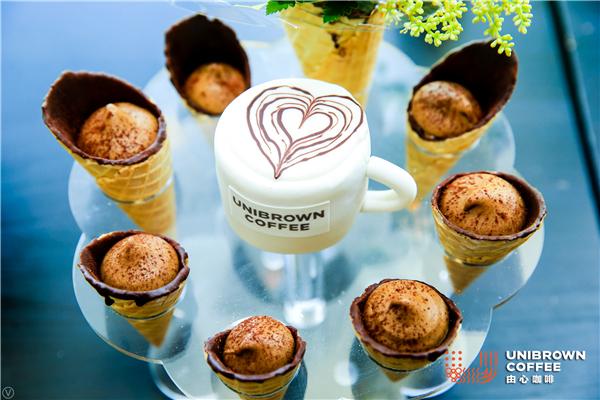
INSTAGRAM's Coffee Coffee has been parachuted into Mordor!
Professional barista exchange please follow the coffee workshop (Wechat official account cafe_style) June 17, the popular INS # coffeeinacone# officially parachuted into Modu! Two types of cone coffee latte and cone matcha have been unveiled by the Shanghai boutique coffee brand UNIBROWN COFFEE, setting off a new round of hot topics in the coffee industry. It is reported that from June 21, the cone latte and eggs
Related
- Why can American refills for free? The difference between Americano and American drip pot coffee
- Being chased out of the rain in front of Starbucks?! Store: Sheltering from rain under umbrellas poses a safety hazard
- The white moonlight has changed?! Lucky launches "Big Winter Pear American"
- Hand-brewed coffee three-stage method, high-sweet and universal brewing method to share! What does the high sweet water level of hand-brewed coffee mean?
- What is the difference between raw, refined and full espresso coffee? How to extract espresso and taste good?
- A complete list of coffee bean names and their meanings! What is Yejia Shefi coffee? Where is Mantelin coffee?
- What grade does Arida Manor Kaduai coffee beans belong to? What treatment is Arida ASD slow anaerobic sun exposure?
- The milk tea cup becomes smaller?! Overlord Tea Girl launches a new "Return to Yunnan" series
- Accused of selling counterfeit and high-priced coffee beans! Well-known boutique coffee brand "Oukelao" bowed and apologized!
- How to make espresso dumplings? Can I eat coffee and glutinous rice balls together?

